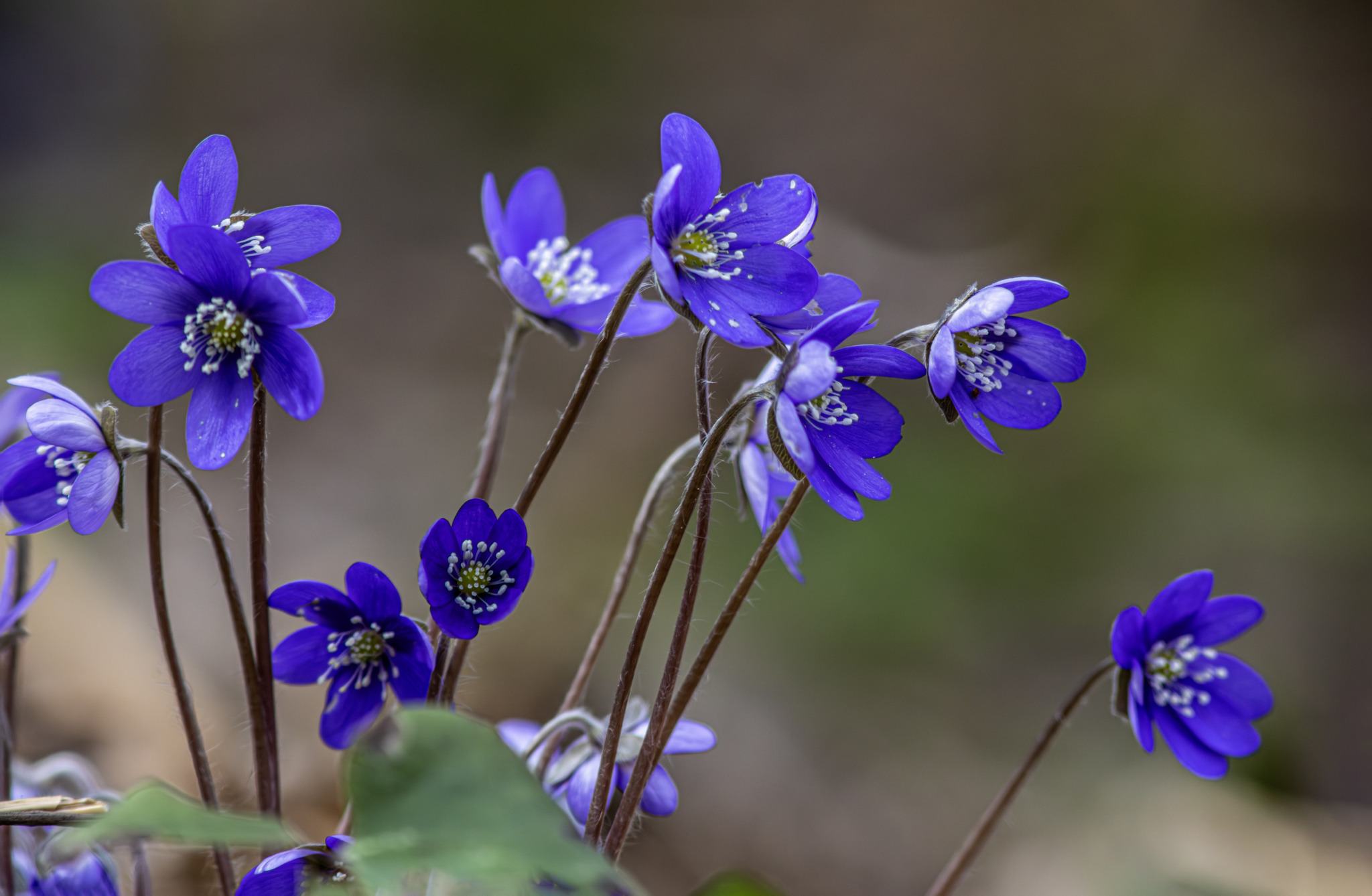Here’s a detailed natural history overview of the Common Hepatica (Hepatica nobilis) — also known as liverleaf, liverwort, kidneywort, or blue anemone:
🌸 Common Hepatica (Hepatica nobilis)
Taxonomy
- Family: Ranunculaceae (Buttercup family)
- Genus: Hepatica
- Species: H. nobilis
A beloved early-spring woodland wildflower across Europe and parts of Asia, often flowering while snow still lies in shaded places.
🔍 Identification
Flowers
- Colors range from blue (most typical) to violet, pink, or occasionally white
- 6–10 petal-like sepals (true petals are absent)
- Yellow center of stamens stands out vividly in spring sunlight
Leaves
- Evergreen, three-lobed, resembling a liver → historic medicinal associations
- New leaves emerge after blooming, old leaves often remain overwinter
- Tops are dark green, sometimes mottled; undersides reddish
Height: 5–15 cm — a small but striking plant
🌿 Habitat & Distribution
Native to
- Most of Europe (especially northern + central regions)
- Baltic countries, Scandinavia
- Parts of western Russia and East Asia
Prefers:
- Deciduous forest floors
- Calcareous or alkaline soils
- Moist but well-drained, humus-rich ground
Often found with anemones, mosses, and early spring flora.
🌱 Life Cycle & Reproduction
- Blooms: March–May (often one of the earliest blossoms)
- Pollinated by bees and early insects
- Seeds develop small elaiosomes, attracting ants → ant dispersal (myrmecochory)
- Slow-growing, long-lived perennials
- Overwinters with mature leaves intact
Flowers close at night and during cold weather to protect reproductive parts.
🧬 Behavior & Special Adaptations
- Evergreen leaves allow energy storage for very early flowering
- Waxy hairs on sepals offer frost resistance
- Efficient light-harvesting before tree canopy closes
🌍 Cultural & Historical Notes
- Name “Hepatica” from Greek hepar = liver
- In medieval Doctrine of Signatures, liver-shaped leaves suggested it could treat liver ailments
- Widely celebrated across northern Europe as a symbol of spring
- Estonia & Scandinavia: prized in nature photography and folk traditions
✅ Key Facts Summary
| Feature | Detail |
|---|---|
| Height | 5–15 cm |
| Flower colors | Blue, violet, pink, white |
| Flowering | Early spring |
| Pollination | Bees & early insects |
| Seed dispersal | Ants |
| Habitat | Deciduous forests, calcareous soils |
| Status | Local declines where forests are disturbed |
📌 Conservation
Generally widespread and stable, but threatened locally by:
- Overharvesting (for gardens/flower picking)
- Forest disturbance
- Soil acidification reducing suitable habitats
Protection of old mixed forests is essential for its persistence.
Visited 831 times, 8 visit(s) today
Views: 1073
Subscribe to the newsletter:
